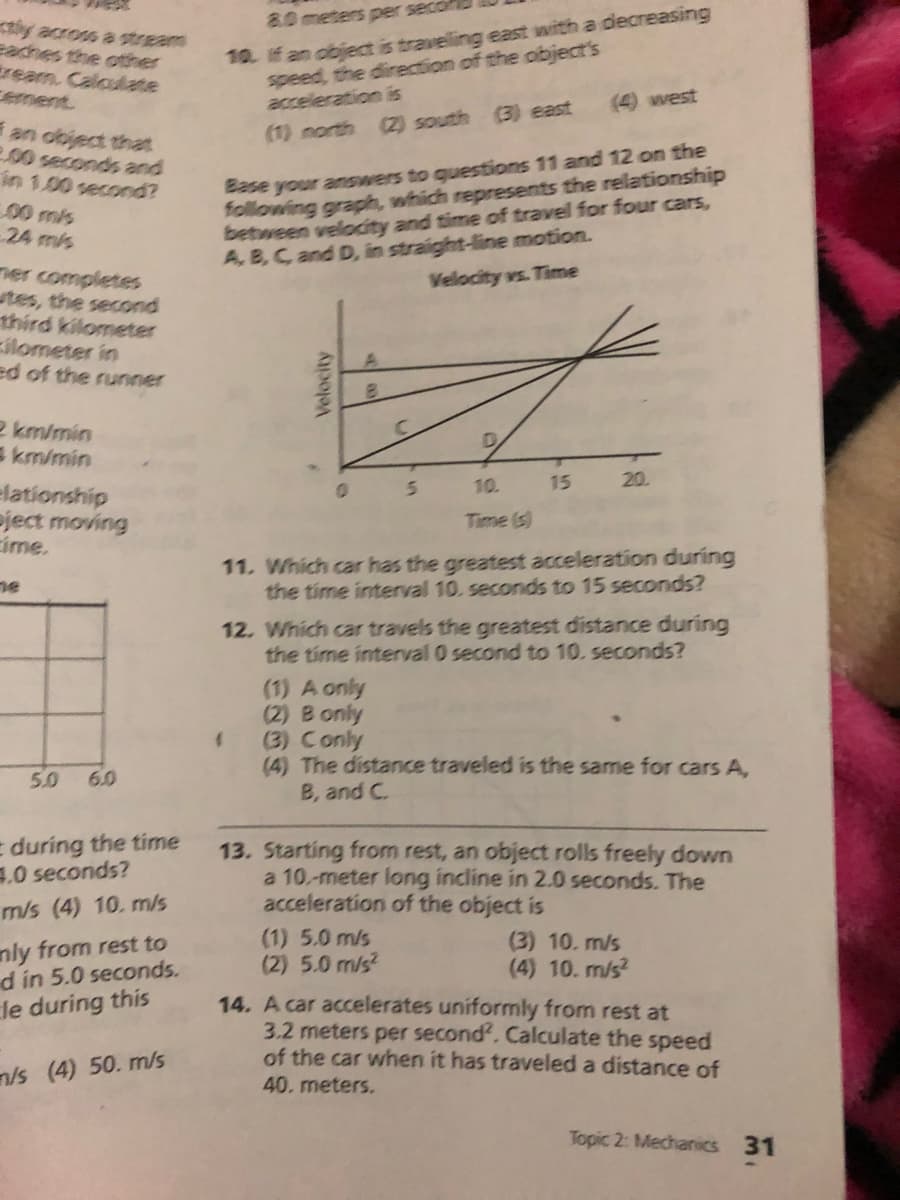ase your answers to questions 11 and 12 on the following graph, which represents the relationship between velocity and time of travel for four cars, A, B, C and D, in straight-line motion. Velocity vs. Time 5 10. 15 20. Time (s) 11. Which car has the greatest acceleration during the time interval 10. seconds to 15 seconds? Velocity
ase your answers to questions 11 and 12 on the following graph, which represents the relationship between velocity and time of travel for four cars, A, B, C and D, in straight-line motion. Velocity vs. Time 5 10. 15 20. Time (s) 11. Which car has the greatest acceleration during the time interval 10. seconds to 15 seconds? Velocity
College Physics
1st Edition
ISBN:9781938168000
Author:Paul Peter Urone, Roger Hinrichs
Publisher:Paul Peter Urone, Roger Hinrichs
Chapter3: Two-dimensional Kinematics
Section: Chapter Questions
Problem 63PE: The great astronomer Edwin Hubble discovered that all distant galaxies are receding from our Milky...
Related questions
Question
please help with question 11

Transcribed Image Text:10. if an object is traveling east with a decreasing
speed, the direction of the object's
acceleration is
80meters per sec
iy across a stream
eaches the other
tream. Caloulate
ement
(4) west
(3) east
(2) south
an object that
200 seconds and
in 1.00 second?
00 m/s
24 mis
(1) north
Base your answers to questions 11 and 12 on the
following graph, which represents the relationship
between velocity and time of travel for four cars,
A, B, C and D, in straight-line motion.
Velocity vs. Time
ner completes
utes, the second
third kilometer
ilometer in
ed of the runner
2 km/min
E km/min
10.
15
20.
Elationship
Pject moving
cime.
Time (s)
11. Which car has the greatest acceleration during
the time interval 10. seconds to 15 seconds?
ne
12. Which car travels the greatest distance during
the time interval 0 second to 10. seconds?
(1) A only
(2) B only
(3) Conly
(4) The distance traveled is the same for cars A,
B, and C.
5.0
6.0
E during the time
.0 seconds?
13. Starting from rest, an object rolls freely down
a 10.-meter long incline in 2.0 seconds. The
acceleration of the object is
m/s (4) 10. m/s
(1) 5.0 m/s
(2) 5.0 m/s?
(3) 10. m/s
(4) 10. m/s?
nly from rest to
d in 5.0 seconds.
le during this
14. A car accelerates uniformly from rest at
3.2 meters per second. Calculate the speed
of the car when it has traveled a distance of
n/s (4) 50. m/s
40. meters.
Topic 2: Mechanics 31
Velocity
Expert Solution
This question has been solved!
Explore an expertly crafted, step-by-step solution for a thorough understanding of key concepts.
This is a popular solution!
Trending now
This is a popular solution!
Step by step
Solved in 2 steps with 2 images

Recommended textbooks for you

College Physics
Physics
ISBN:
9781938168000
Author:
Paul Peter Urone, Roger Hinrichs
Publisher:
OpenStax College

Physics for Scientists and Engineers, Technology …
Physics
ISBN:
9781305116399
Author:
Raymond A. Serway, John W. Jewett
Publisher:
Cengage Learning

College Physics
Physics
ISBN:
9781285737027
Author:
Raymond A. Serway, Chris Vuille
Publisher:
Cengage Learning

College Physics
Physics
ISBN:
9781938168000
Author:
Paul Peter Urone, Roger Hinrichs
Publisher:
OpenStax College

Physics for Scientists and Engineers, Technology …
Physics
ISBN:
9781305116399
Author:
Raymond A. Serway, John W. Jewett
Publisher:
Cengage Learning

College Physics
Physics
ISBN:
9781285737027
Author:
Raymond A. Serway, Chris Vuille
Publisher:
Cengage Learning